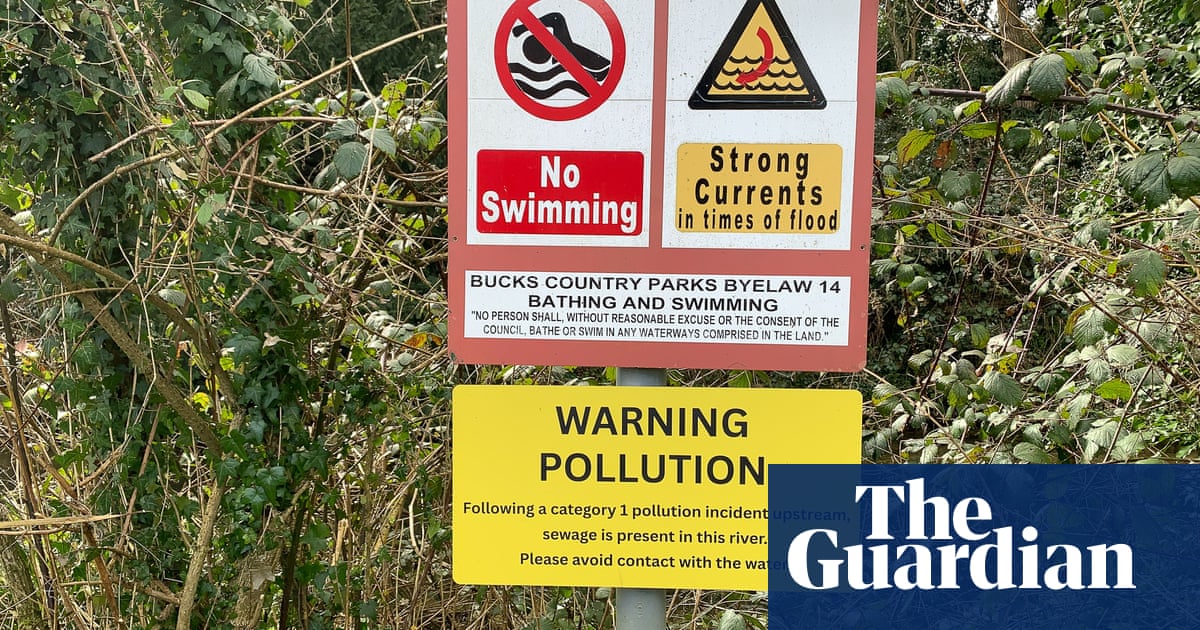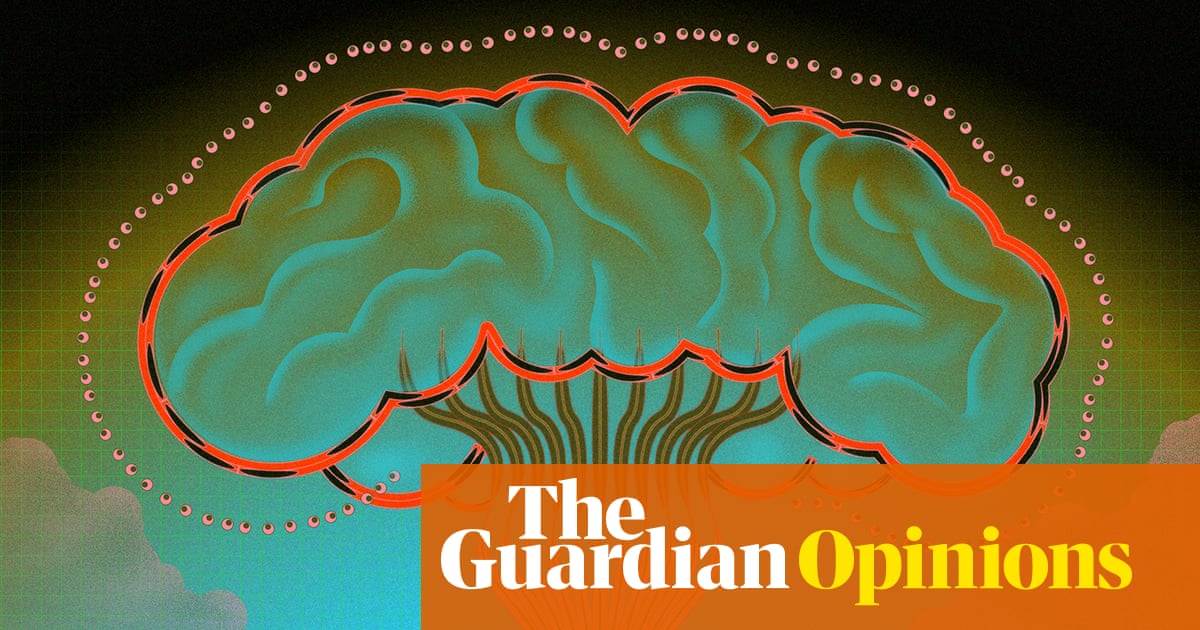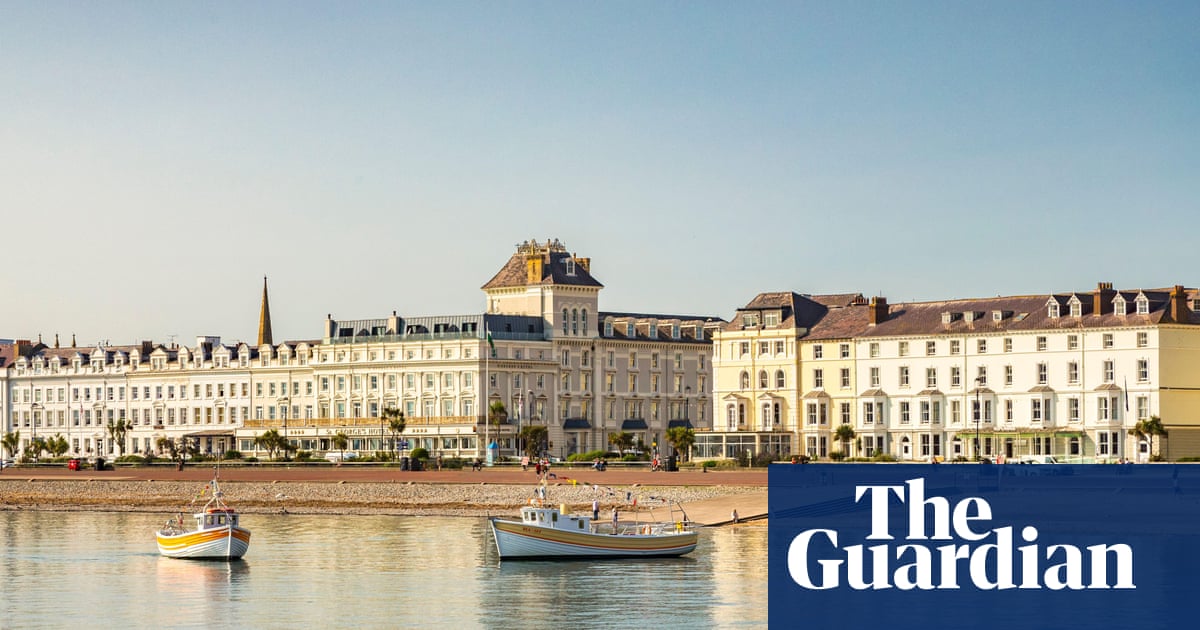Sitting at the bottom of the Gulf of Thailand about 20 metres below the ocean surface is the HTMS Hanhak Sattru. Snappers, yellowtail fusiliers and bannerfish swim through the ship’s corridors,while barnacles, algae and young coral cling to the iron ladders and machine-gun on deck. Nearby is another wreck, the HTMS SuphairinBoth were intentionally submerged by the Royal Thai Navy in 2023 to create artificial reefs and dive sites. Their planned scuttling have enabled marine scientists to produce some of the first research on how much shipwrecks change the marine environment.
There is already plenty of existing research that shows that shipwrecks create a new ecosystem. But whether they pull fish from natural reefs or promote production of new fish (known as the attraction-pollution hypothesis) has historically been hard to say.
“It’s hard to get that information from shipwrecks because the majority of them have gone down by accident,” explained Piers Baillie, the founder and director of the marine research centre Global Reef, located on the holiday island of Koh Tao. In this case, however, working with the navy and department of marine and coastal resources, Global Reef was able to collect data before and after HTMS Hanhak Sattru and HTMS Suphairin were sent to the bottom of the ocean.
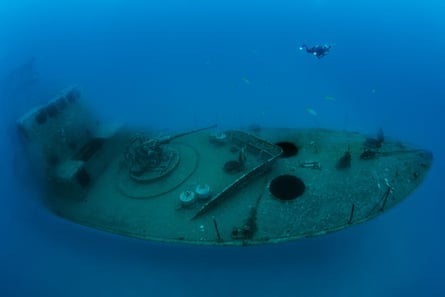
Early data, according to Baillie, shows that the wrecks have attracted fish from natural reefs and created a habitat for new ones to reproduce, including those that are endangered. “Like anything in science, there’s a slightly nuanced approach to things where we’ve seen potential evidence to support strongly the attraction side of the hypothesis. However, we’re also seeing that there are these juveniles arriving at the shipwrecks.”
This is important because if fish are reproducing on the wreck that means they can be used as a tool to boost fish stocks in a context where numbers are depleting owing to climate change and overtourism. If the wreck is pulling fish away from a natural reef, that may have consequences for nearby natural reefs’ ecosystems, but it could also offer species a level of protection from fishing. These shipwrecks – along with a handful of others purposely sunk in the country – are popular dive sites and the presence of dive boats acts as a deterrent to fishers, he explained, while commercial vessels are unable to trawl a shipwreck.
Shipwrecks already offer an alternative spot for divers to explore, reducing the pressure on natural reefs, according to Iain Suthers, professor at the School of Biological, Earth & Environmental Sciences at the University of New South Wales.
Many reefs are succumbing to warming ocean temperatures, physical damage from boats, and coral diseases. Several species that live in the clear waters of Koh Tao, such as stingrays, groupers and bamboo sharks, are also endangered. But here, in one of the most popular dive sites globally, is some of Thailand’s worst underwater damage. More than 500,000 tourists a year arrive on the country’s wooden dock, many of whom are eager to spend their days in the sea with one of the island’s 80-plus dive schools, spotting whale sharks, turtles and sweet lips. Their presence puts the natural ecosystem in danger.
“We need to have a tourism industry that can see and harvest fish. We need to have these sorts of structures to improve the fishery,” Suthers said. “I think the future is in these areas of the ocean – less than 200 metres deep, such as the Gulf of Thailand – to use [artificial reefs] to facilitate the fish to harvest.”
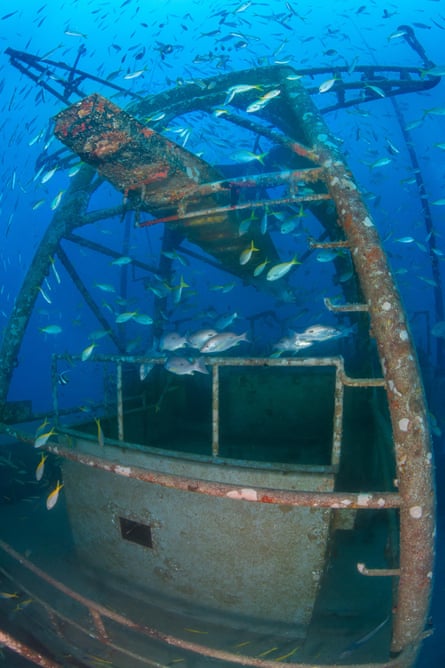
The country has been installing different types of artificial reefs since the 1970s and has scattered thousands of structures, including other ships, along Thailand’s two main coastlines. “There’s been a lot of proactivity in terms of trying to pursue best practices for coral conservation, whether it’s active restoration [or] habitat creation, more than any other country that I have worked in or seen or even learned about,” said Dr Rahul Mehrotra, research director at Aow Thai Marine Ecology Center. Thailand has committed to the international conservation goal of protecting 30% of the world’s land and ocean by 2030 while also looking for ways to safeguard its own marine ecosystems, in part because of the tourism revenue they generate.
Shipwrecks, with their nooks, passageways and air of mystery, are a way of potentially protecting them. “Artificial reefs and particularly shipwrecks are providing habitats to these valuable, heavily targeted potentially threatened species,” said Baillie whose team of six scientists and around 16 interns spends its days wetsuit-clad, oxygen tanks in tow and research questions at the ready.
That such research is being supported by the government is significant, said Mehrotra. “It’s refreshing, as a conservationist and now as an ecologist, to see officials behind the nation seeming to take the future needs of the marine ecosystem seriously.” He believes that’s because of the Buddhist country’s spiritual, religious and cultural relationship with wildlife. “Its relationship with the sea and its relationship with wildlife is deeply ingrained in the identity of Thailand,” said Mehrotra. “It seems to come from an earnest place of ‘we must protect and we must understand.’ That is incredibly refreshing to find.”

.png) 9 hours ago
5
9 hours ago
5









































